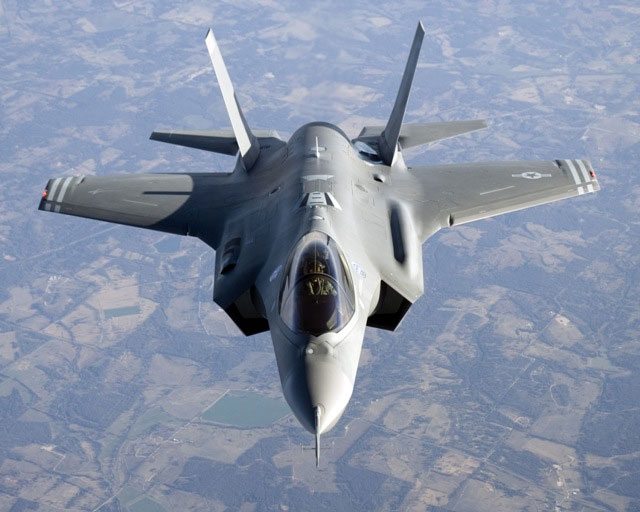Defense Secretary Leon E. Panetta yesterday reaffirmed the Defense Department’s commitment to the F-35 joint strike fighter program and to ensuring it remains within the defense strategy’s budget.
The secretary spoke at a news conference following a meeting with Mexican and Canadian defense leaders here.
“As part of the defense strategy that the United States went through and has put in place, we have made very clear that we are 100 percent committed to the development of the F-35,” he said. “It’s a fifth-generation fighter, [and] we absolutely need it for the future.”
Acknowledging that the Defense Department has to be vigilant and provide as much oversight as possible as the aircraft continues to be developed, Panetta said Pentagon officials are confident that “this plane can do everything that it’s being asked to do in terms of performance.
“We’ve been testing it, and we continue to evaluate it as we proceed,” he continued. “And we’ve made very clear to the industries involved in its production that they have to keep it within the cross-confinements that we’ve provided with regards to this plane.”
Panetta noted the price of each aircraft varies from variant to variant, with three types involved in the program’s development. Canada signed on for the project’s production, sustainment and follow-on development phase on Dec. 11, 2006, along with Australia, and the United Kingdom.
Canadian Defense Minister Peter MacKay called the F-35 an example of interoperability as his country faces similar challenges with the joint strike fighter program.
“In addition, I would add that this is the aircraft that the Royal Canadian Air Force, after an extensive internal examination of capabilities and what was on the market, came to us and said, ‘This the plane we need. This is the plane we want for a whole number of reasons.'”
MacKay said “due diligence and analysis” are necessary to ensure taxpayers are well-served and their best interests are considered.
“On the aspect of budgets as we go forward, every department of government — every defense department, certainly all of our NATO partners, our Mexican colleagues [and] our friends around the globe — are looking to prioritize their defense spending,” he said. “It [should] come as no surprise to anyone here that Canada is going through that exact same process in determining what our defense needs are at home.”









